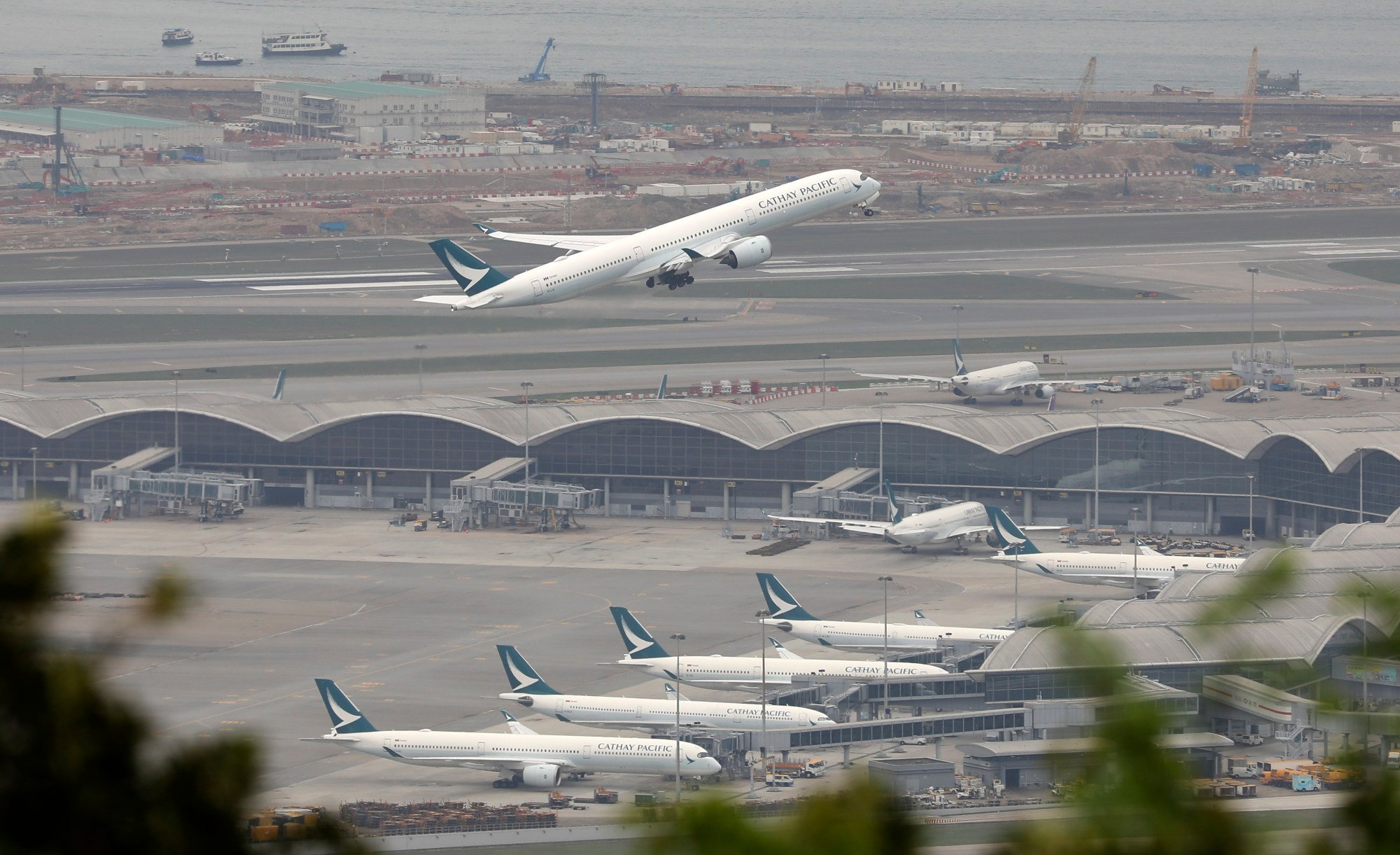
Hong Kong’s airport logs post-Covid record passenger numbers over festive season
- Official figures show 4.3 million passengers used city’s airport last month, 75 per cent of number recorded in same month of pre-pandemic 2019
- But analysts say staff shortages and slower-than-expected outbound demand from mainland China remain worry and could slow sector recovery
Hong Kong’s air passenger traffic figures climbed to 75 per cent of pre-pandemic levels last month, but staff shortages and slower-than-expected recovery of outbound demand from mainland China remain a concern for a full recovery this year, analysts have said.
The Airport Authority reported on Monday that a year high of 4.3 million passengers passed through the airport in December – 75 per cent of the figure for the same month in 2019, before Covid-19 hit.
The authority said that daily passenger volumes and flights had recovered to 80 per cent of pre-pandemic levels over the Christmas peak. Traffic to and from Southeast Asia, the mainland and Taiwan logged the biggest increases.
“Air traffic at Hong Kong International Airport continued to recover in 2023,” the authority said.

The airport handled 40 million passengers over the whole of last year, 56 per cent of pre-pandemic levels. There were 71.5 million passengers in 2019.
Cargo levels, however, reached 89 per cent of the pre-pandemic figure in 2023.
Passenger traffic dropped to just 1 per cent of 2019 levels at the height of the pandemic, when the city imposed tough restrictions on travellers and aircrew.
The authority predicted last summer that passenger traffic would return to 80 per cent of pre-pandemic levels by the end of 2023, with full recovery by the end of this year.
The International Air Transport Association (IATA) last July revised its projections for Hong Kong’s aviation recovery. It forecast that the city would reach pre-pandemic levels by the end of this year.
Recovery of Hong Kong aviation sector ‘stronger than expected’: IATA chief
That was three years earlier than the global airline body had earlier expected.
Cathay Group CEO Ronald Lam Siu-por earlier this month apologised after the airline cancelled more than 160 flights since December 24 last year. The airline said the cancellations were designed to ensure smooth operation over the Lunar New Year holiday, amid a shortage of experienced pilots.
Cathay and its budget arm HK Express have set a target of a return to full passenger flight capacity by 2024.
The airport has 60,000 staff at present, 18,000 down on the 78,000 employed before the Covid-19 pandemic.
The airport will need to hire another 9,000 staff to reach its target of 69,000 by the end of this year, when the airport’s three-runway system is expected to be operational.
Hong Kong’s airport braces for Christmas rush of more than 1,000 flights a day
Andrew Yuen Chi-lok, a senior lecturer in the Chinese University of Hong Kong’s Aviation Policy and Research Centre, said that although labour shortages remained “the major bottleneck”, he was confident Hong Kong’s aviation sector was on track for full recovery this year.
But Brendan Sobie, an independent aviation industry analyst, said he did not see Hong Kong reaching 100 per cent passenger traffic levels this year and that demand looked weak after the Lunar New Year.
Sobie added that outbound demand from the mainland remained a concern.
The country is dealing with sluggish economic growth and a weakened yuan, which are among the reasons Chinese travellers have turned to domestic travel.
The IATA said international demand for travel to and from the mainland was 40 per cent below 2019 levels.
“Hong Kong will continue to close the gap with other hubs, but a full recovery of traffic levels may not happen this year,” Sobie added.

